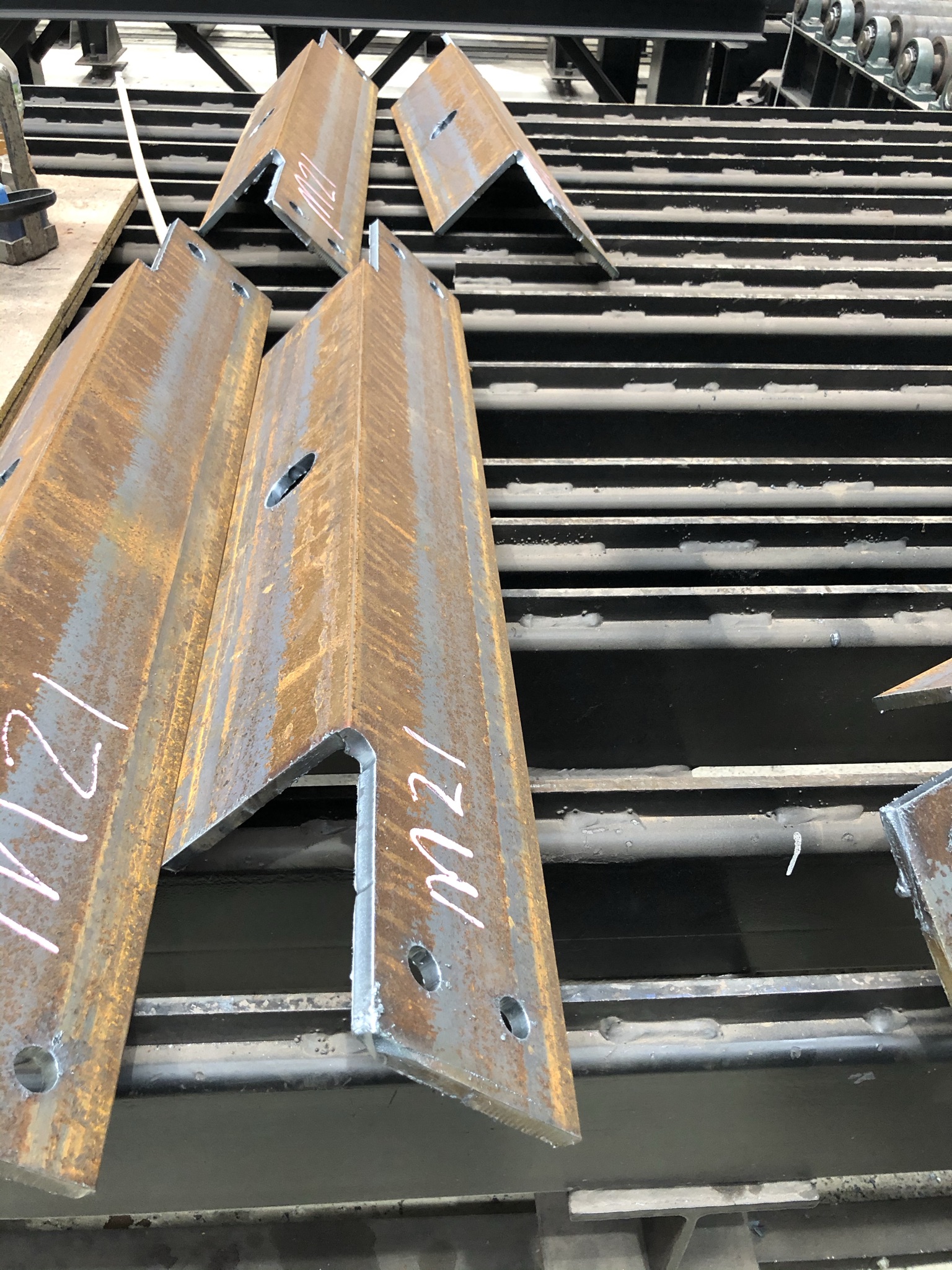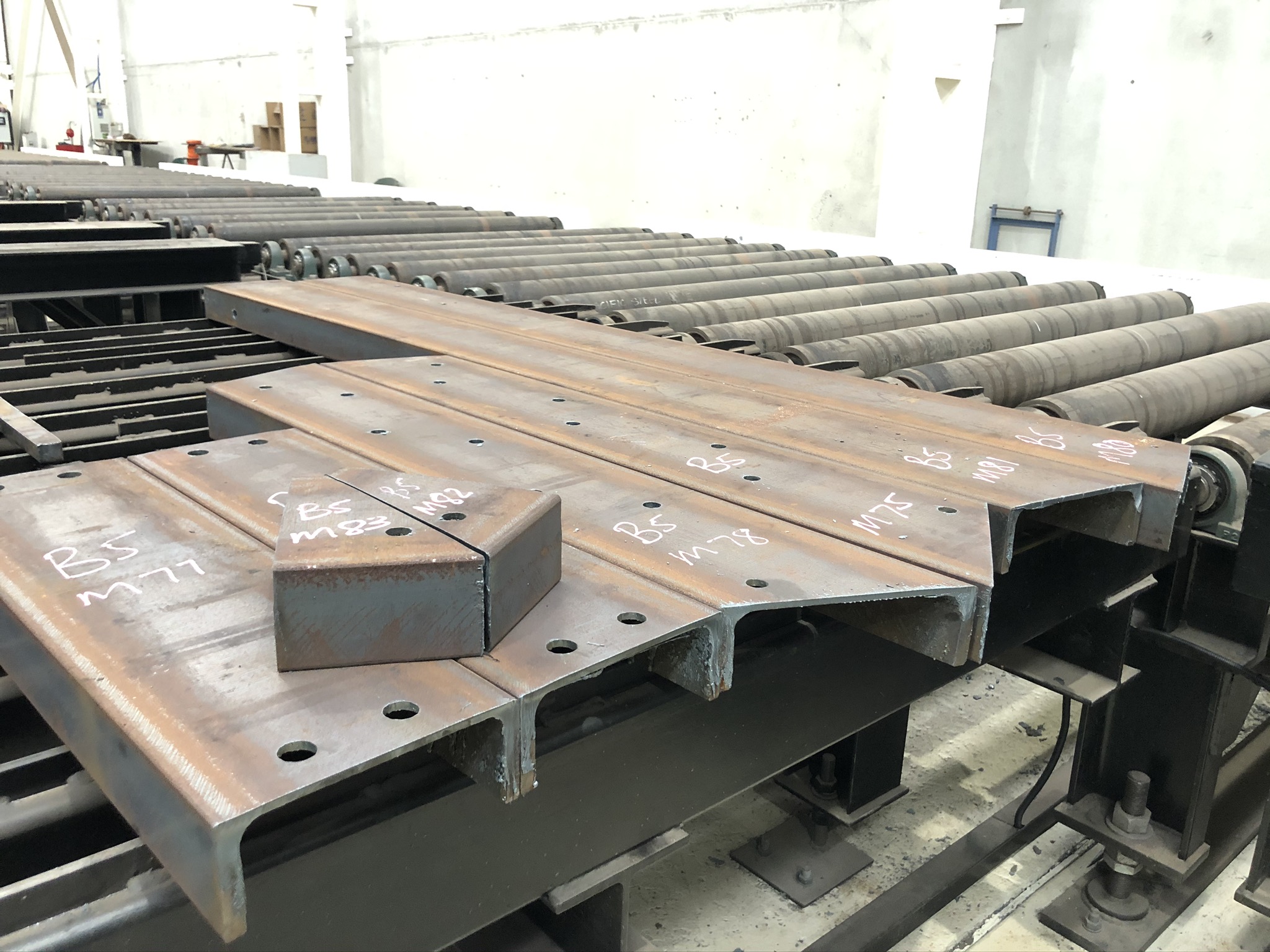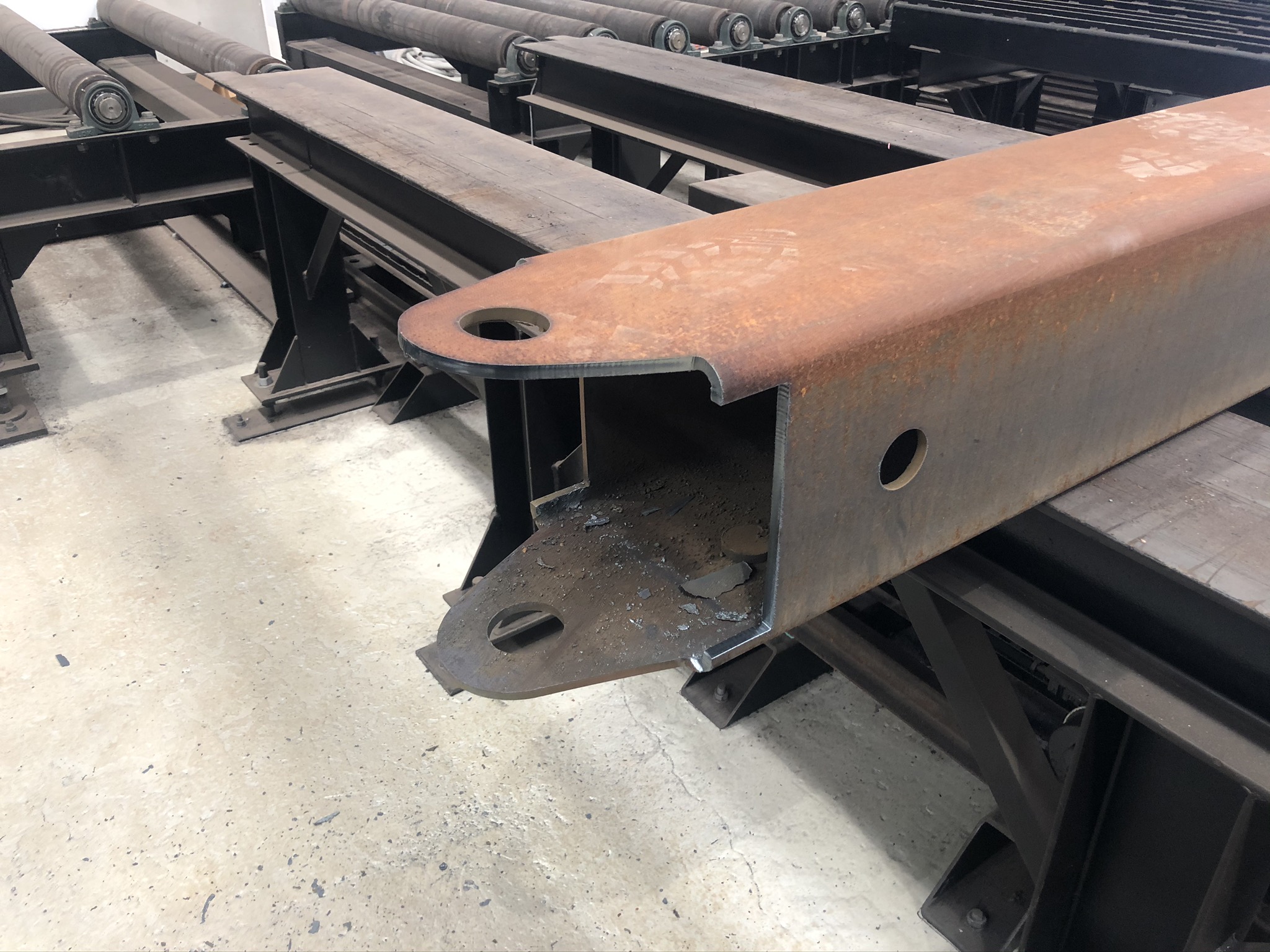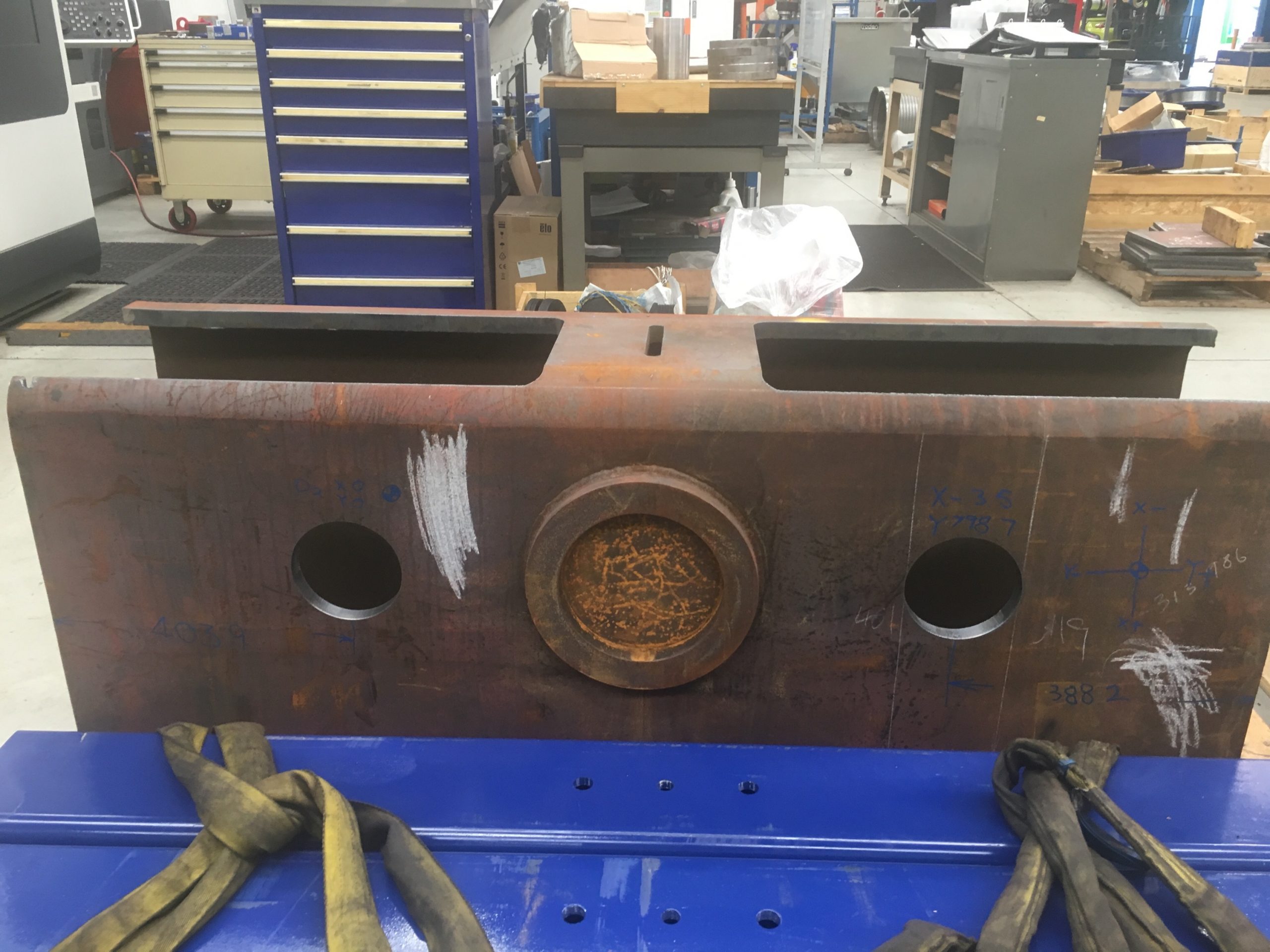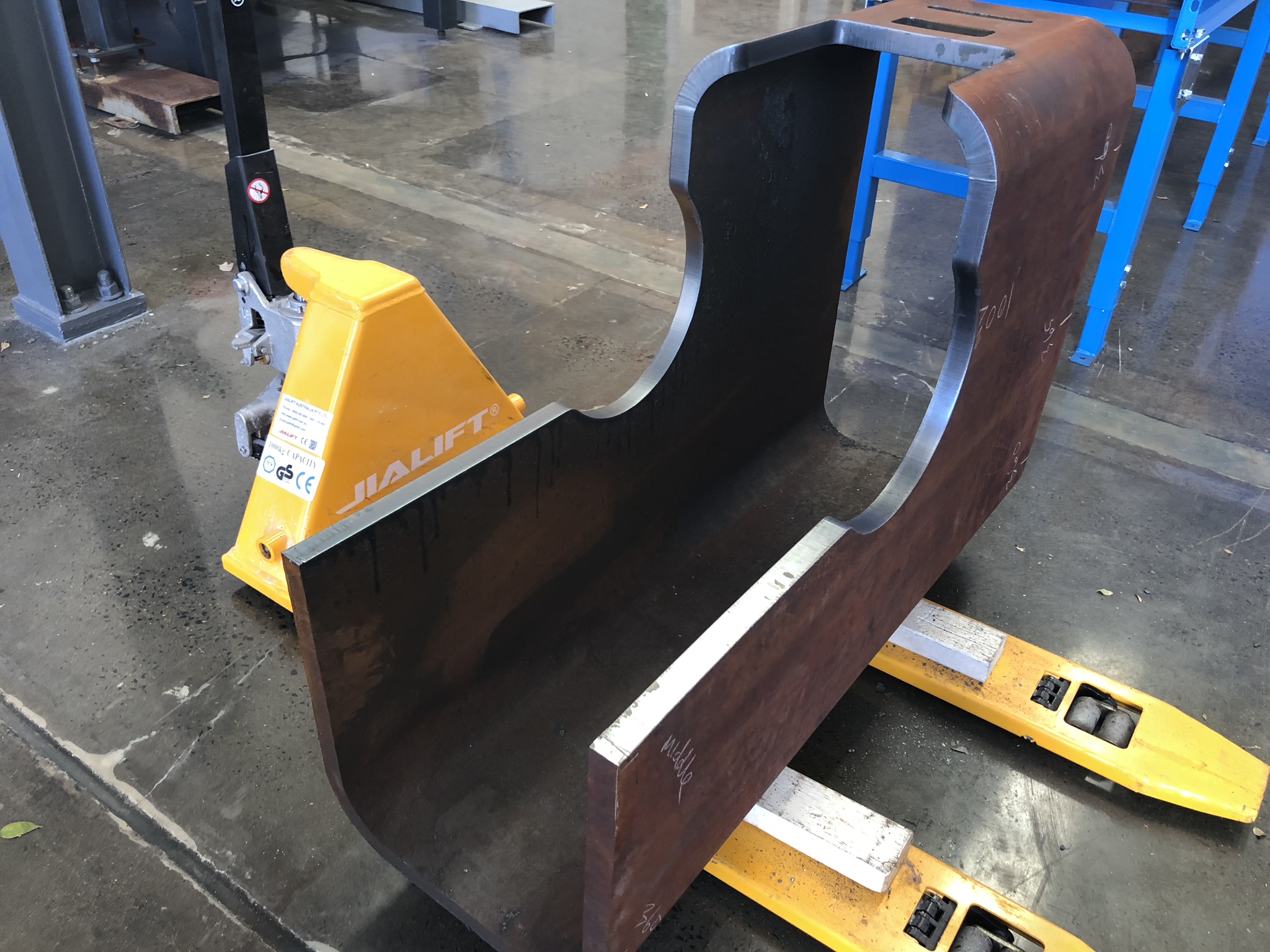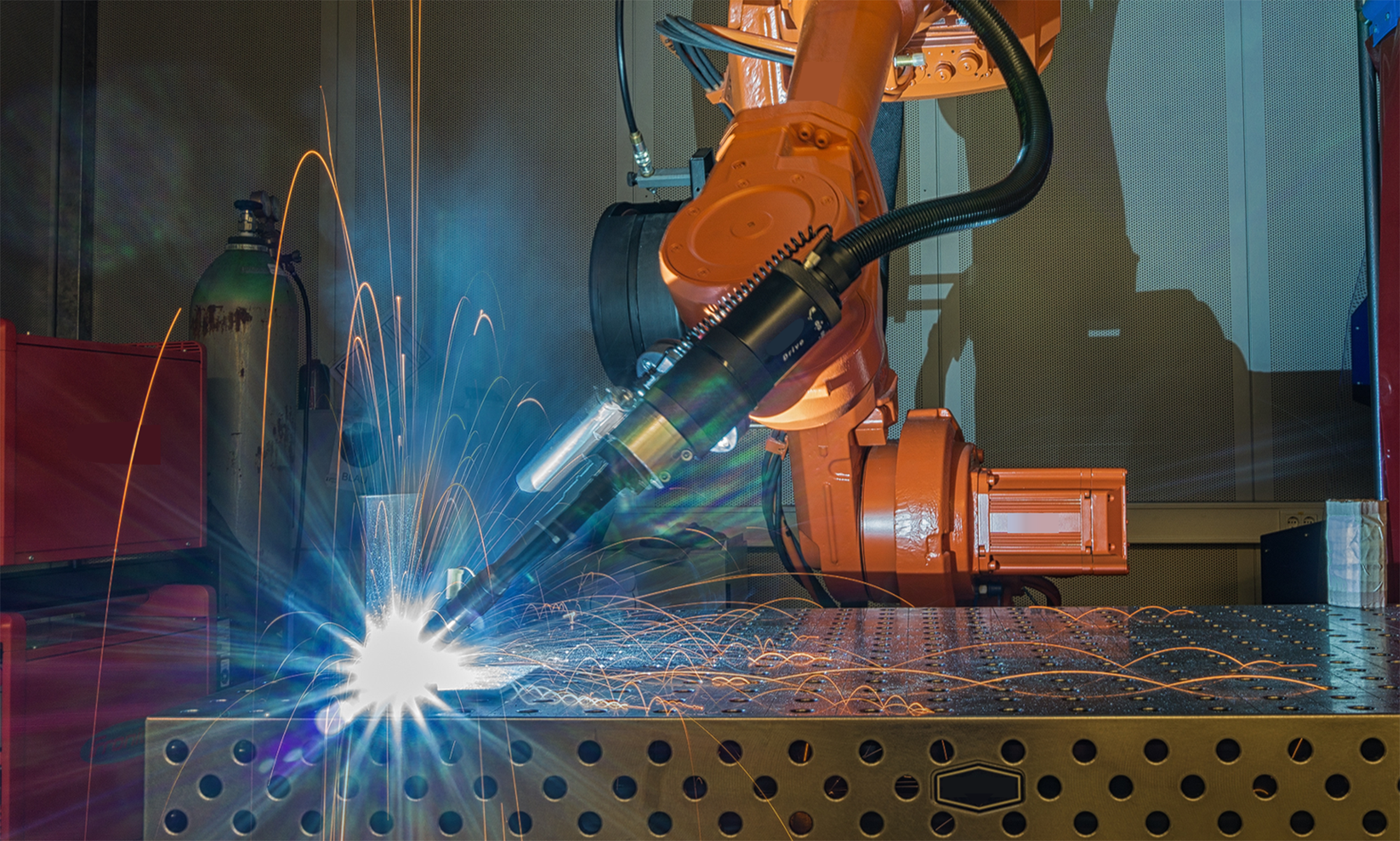The productivity boost for your beam cutting line
MOSES-PROFIL is the leading tool for automated robot programming for cutting tasks on standard and special profiles in steel and shipbuilding. Our many years of experience in the process control of robot-assisted oxyfuel and plasma cutting are summarized in this module. MOSES-PROFIL enables a new dimension of programming speed and program quality. By suitable integration into your plant concept, MOSES-PROFIL achieves complete automation - from programming to production.
Due to its high flexibility, various paths to the machining program are possible.
Fully automatic cut definition
MOSES-PROFIL has powerful interfaces for the fully automatic generation of the cut definition from CAD data. For shipbuilding, two preprocessors are available for connection to the NC interfaces of TRIBON and CADDS5 (Generic Files). For importing CAD data for steel construction, we support the widely used DSTV-NC interface.
Interactive cut definition
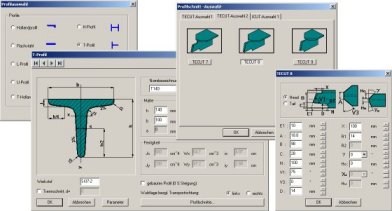
The cut definitions for the individual profile types are created interactively in this mode. The cutting task is defined by selecting the profile type and cut type from extensive libraries by graphical user guidance. A large number of standard and special profiles with all common forms of notches, endcuts and incuts are available. Furthermore, various markings and arbitrary signatures can be defined.
Program generation
Cut definitions are represented by the 3D solid model of the finished profile with additional process information. The robot programs are created on this basis. A simulation run with collision control in a cell model calibrated on the real system is used to check that the programs run without errors. The workpiece model created automatically for programming can also be processed manually if required and used as the basis for new cutting shapes. Cut definitions can be saved and also subsequently edited as required using an editor. This means that special cutting shapes can also be displayed, which cannot be imported into the system, for example, due to the restrictions of the DSTV format.

Precision
The use of sensor technology makes it possible to compensate the manufacturing tolerances of the machine as well as form and position tolerances of the workpiece. MOSES-PROFIL fully automatically creates all programs for measuring the different profile shapes (e.g. with laser distance sensors). Deviations between virtual and real workpiece position are compensated with the determined measurement data in the cutting programs. The programs created offline can thus be used immediately.
In many profiles used in steel construction, such large form deviations occur that the pure compensation of positional tolerances is no longer sufficient to ensure an acceptable cut quality. MOSES-PROFIL-CUT is able to compensate also the form deviations of these profiles. Based on the measurement data, the profile model with the corresponding cut definition is adjusted. In case of deformed profiles, the desired section shape is thus preserved by observing section planes and dimensional references of the imported CAD data.

Automated manufacturing and flexibility
The simple operation and the ability to import CAD data from the engineering department form the basis for economical automation of batch size 1. At the same time, the automatic control of sensors for component calibration enables high cutting accuracy. Programming time is reduced to a fraction compared to conventional methods. Cutting programs based on DSTV data are created completely rule-based. This linking of geometry and integrated process know-how is superior in its flexibility to any system that still works with macros.
MOSES-COM technology additionally allows you to break away from fixed production pre-planning. MOSES is controlled in client-server mode directly by the operator at the flame cutting machine. Programs based on CAD data can be requested and the processing sequence and position selected directly at the machine.
